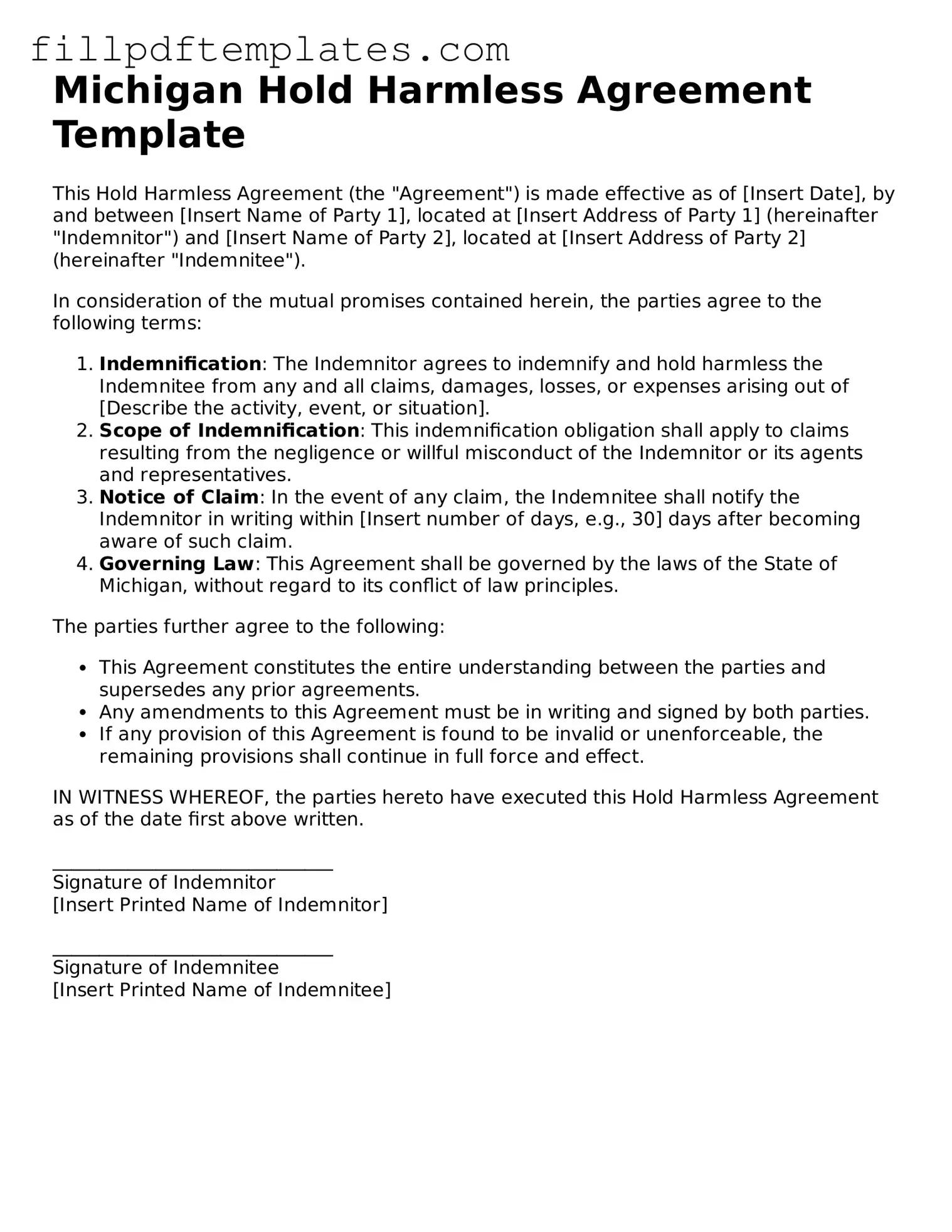Michigan Hold Harmless Agreement Template
This Hold Harmless Agreement (the "Agreement") is made effective as of [Insert Date], by and between [Insert Name of Party 1], located at [Insert Address of Party 1] (hereinafter "Indemnitor") and [Insert Name of Party 2], located at [Insert Address of Party 2] (hereinafter "Indemnitee").
In consideration of the mutual promises contained herein, the parties agree to the following terms:
- Indemnification: The Indemnitor agrees to indemnify and hold harmless the Indemnitee from any and all claims, damages, losses, or expenses arising out of [Describe the activity, event, or situation].
- Scope of Indemnification: This indemnification obligation shall apply to claims resulting from the negligence or willful misconduct of the Indemnitor or its agents and representatives.
- Notice of Claim: In the event of any claim, the Indemnitee shall notify the Indemnitor in writing within [Insert number of days, e.g., 30] days after becoming aware of such claim.
- Governing Law: This Agreement shall be governed by the laws of the State of Michigan, without regard to its conflict of law principles.
The parties further agree to the following:
- This Agreement constitutes the entire understanding between the parties and supersedes any prior agreements.
- Any amendments to this Agreement must be in writing and signed by both parties.
- If any provision of this Agreement is found to be invalid or unenforceable, the remaining provisions shall continue in full force and effect.
IN WITNESS WHEREOF, the parties hereto have executed this Hold Harmless Agreement as of the date first above written.
______________________________
Signature of Indemnitor
[Insert Printed Name of Indemnitor]
______________________________
Signature of Indemnitee
[Insert Printed Name of Indemnitee]
